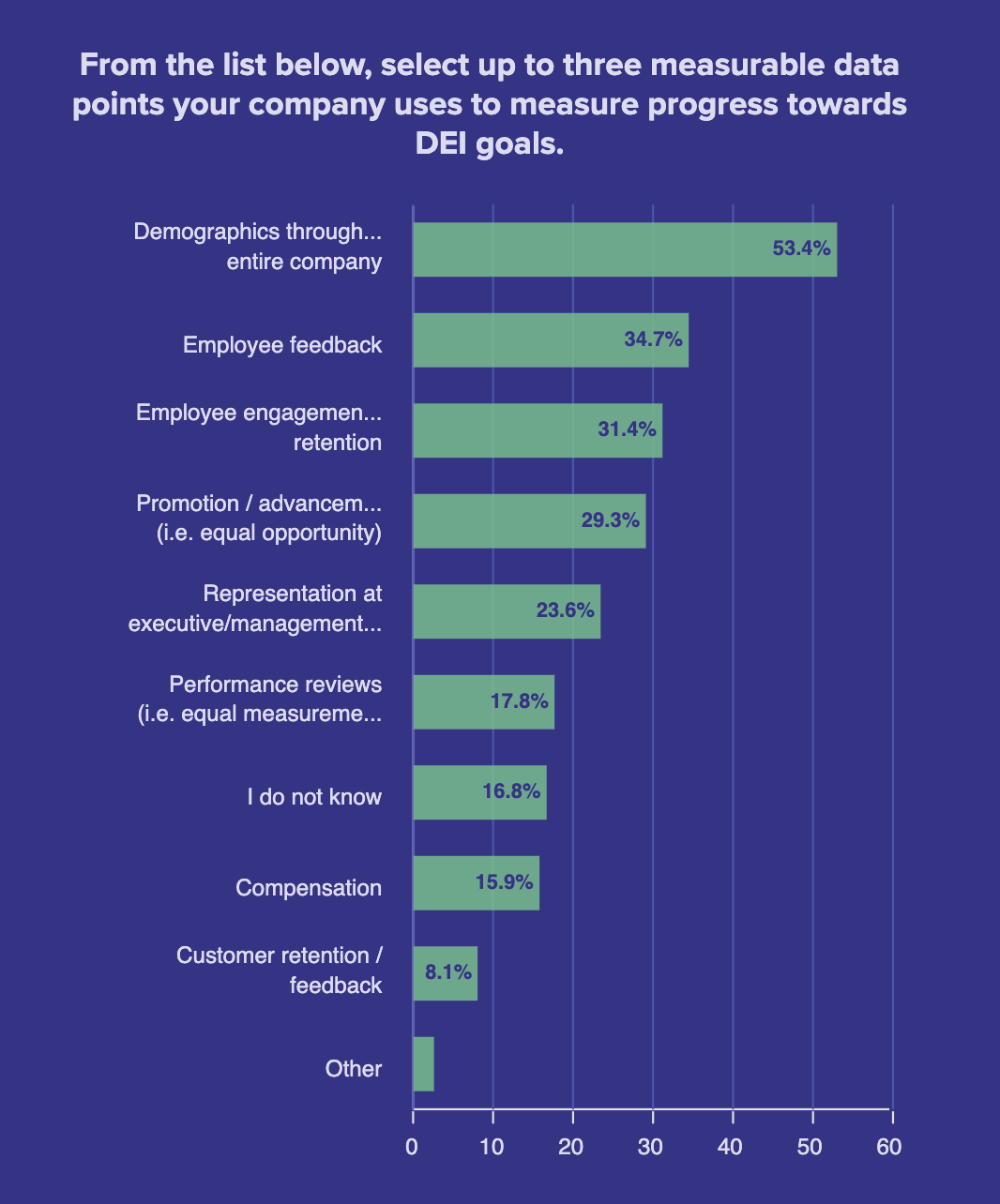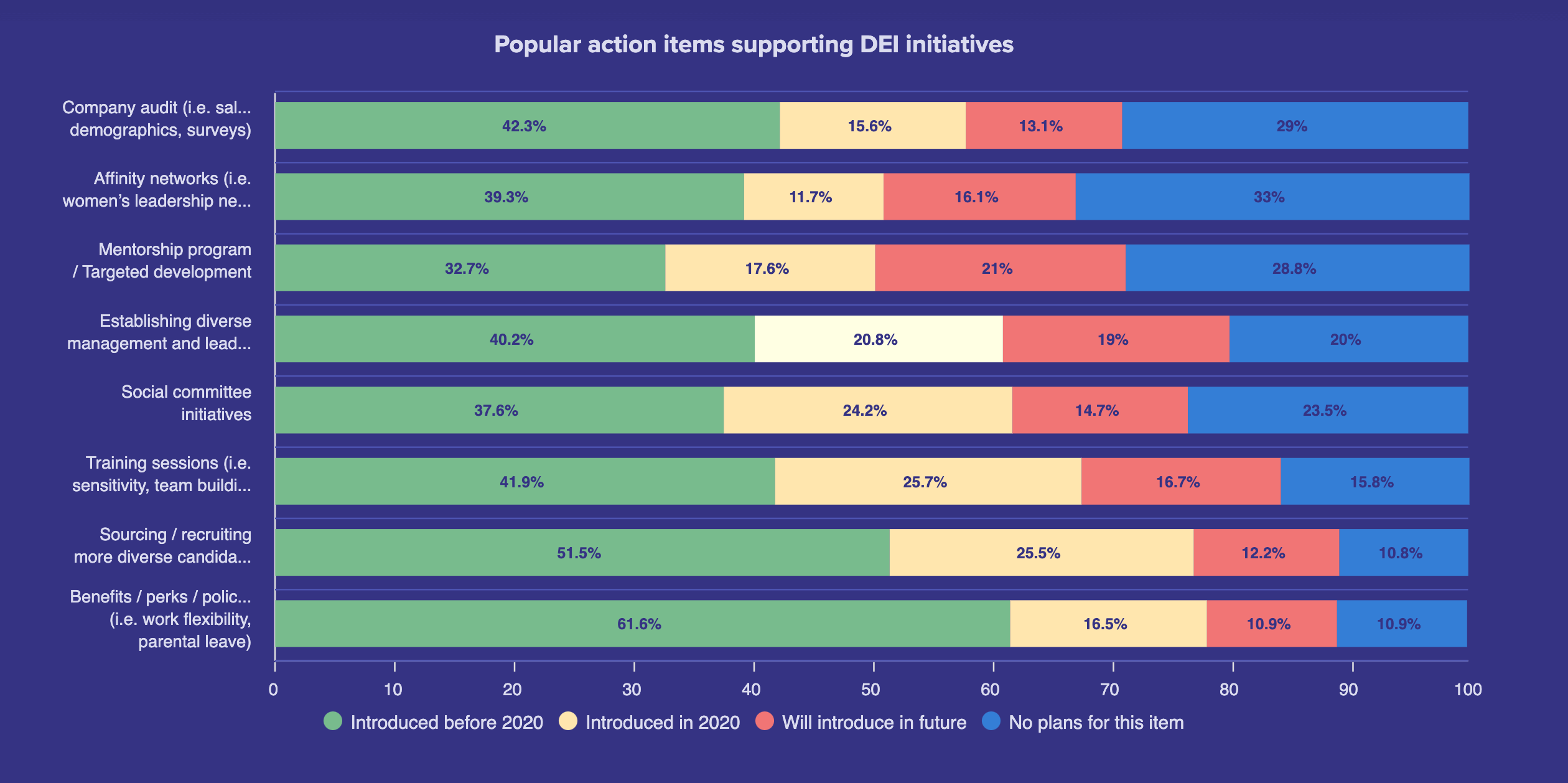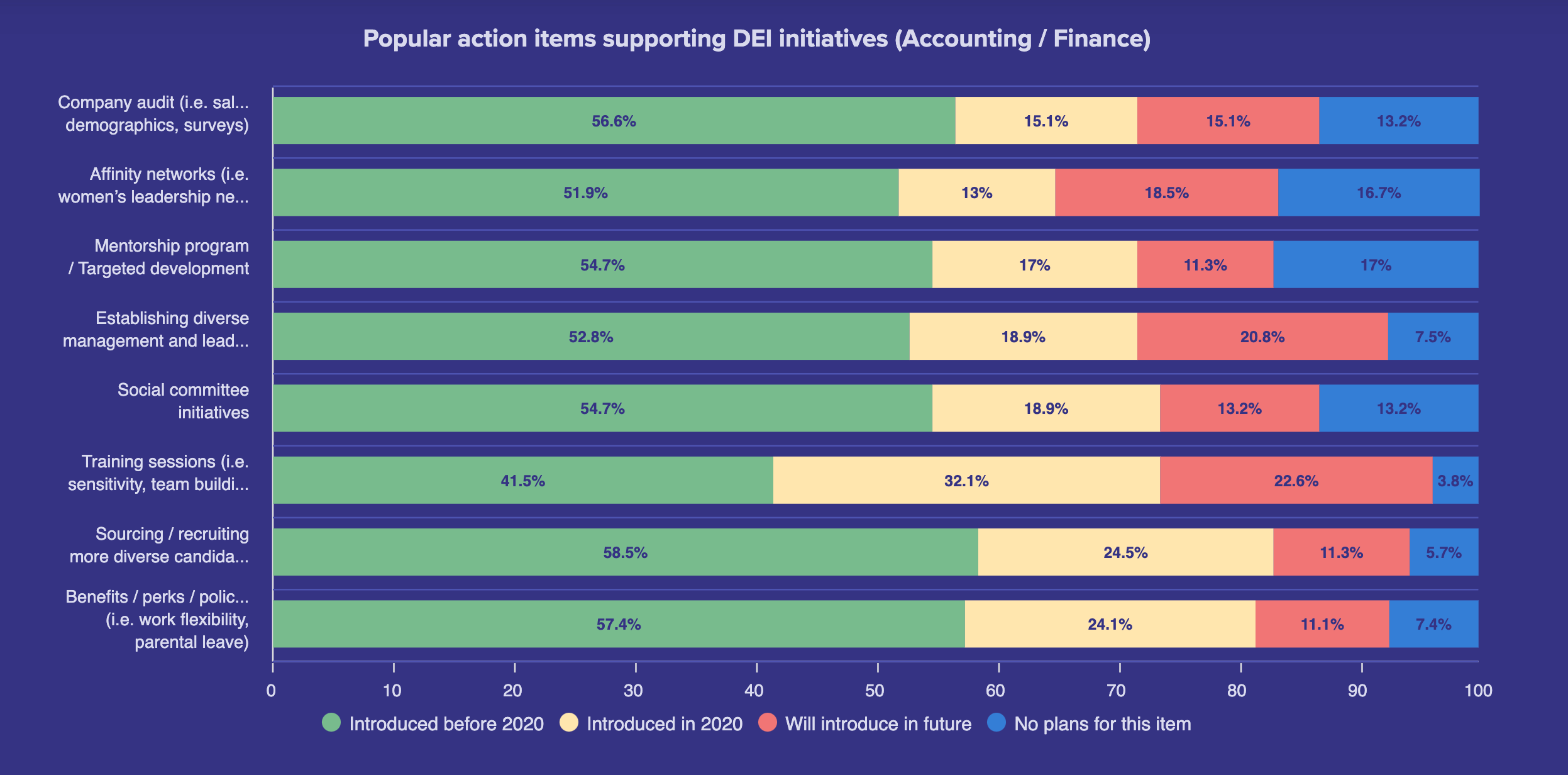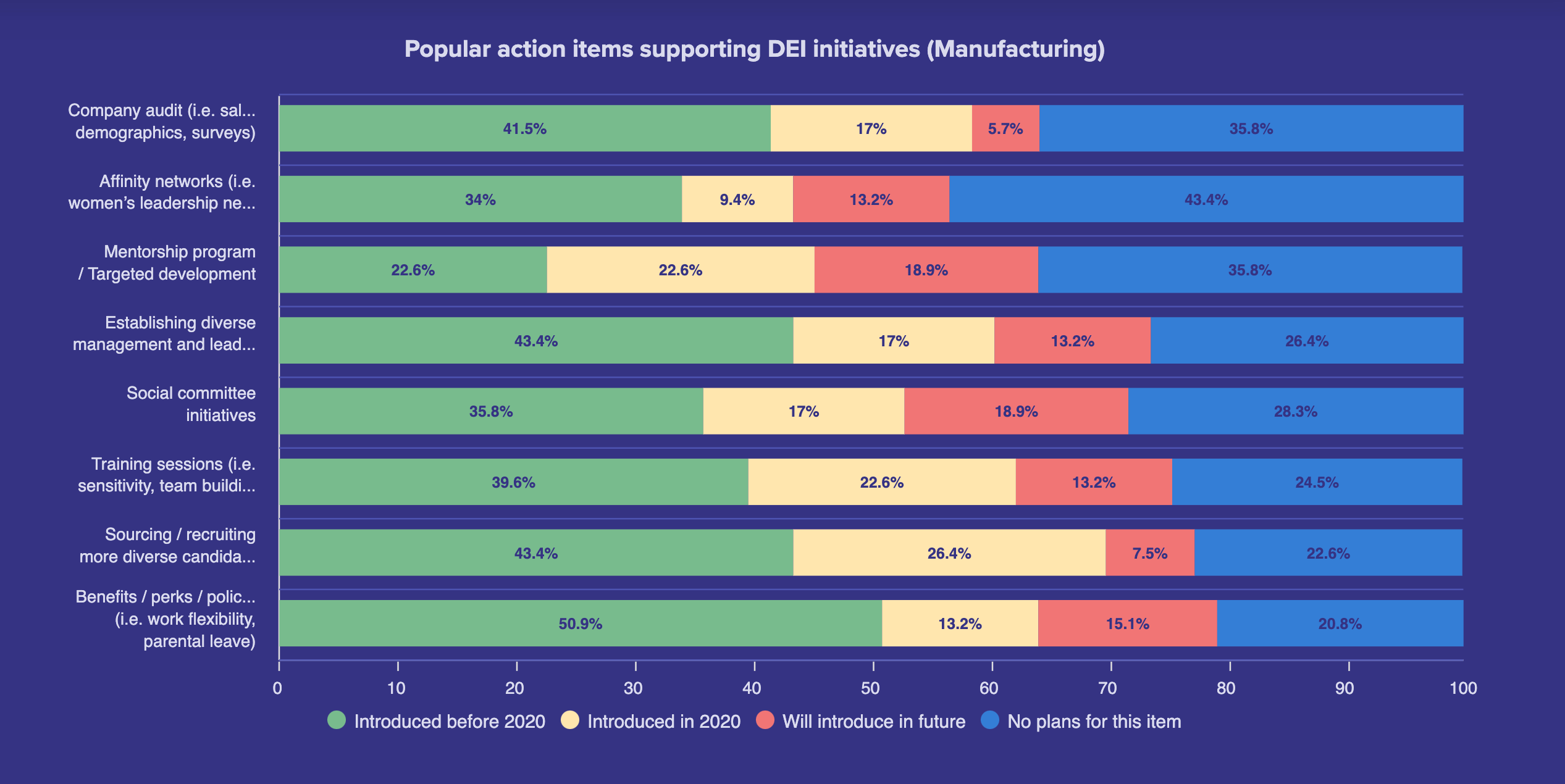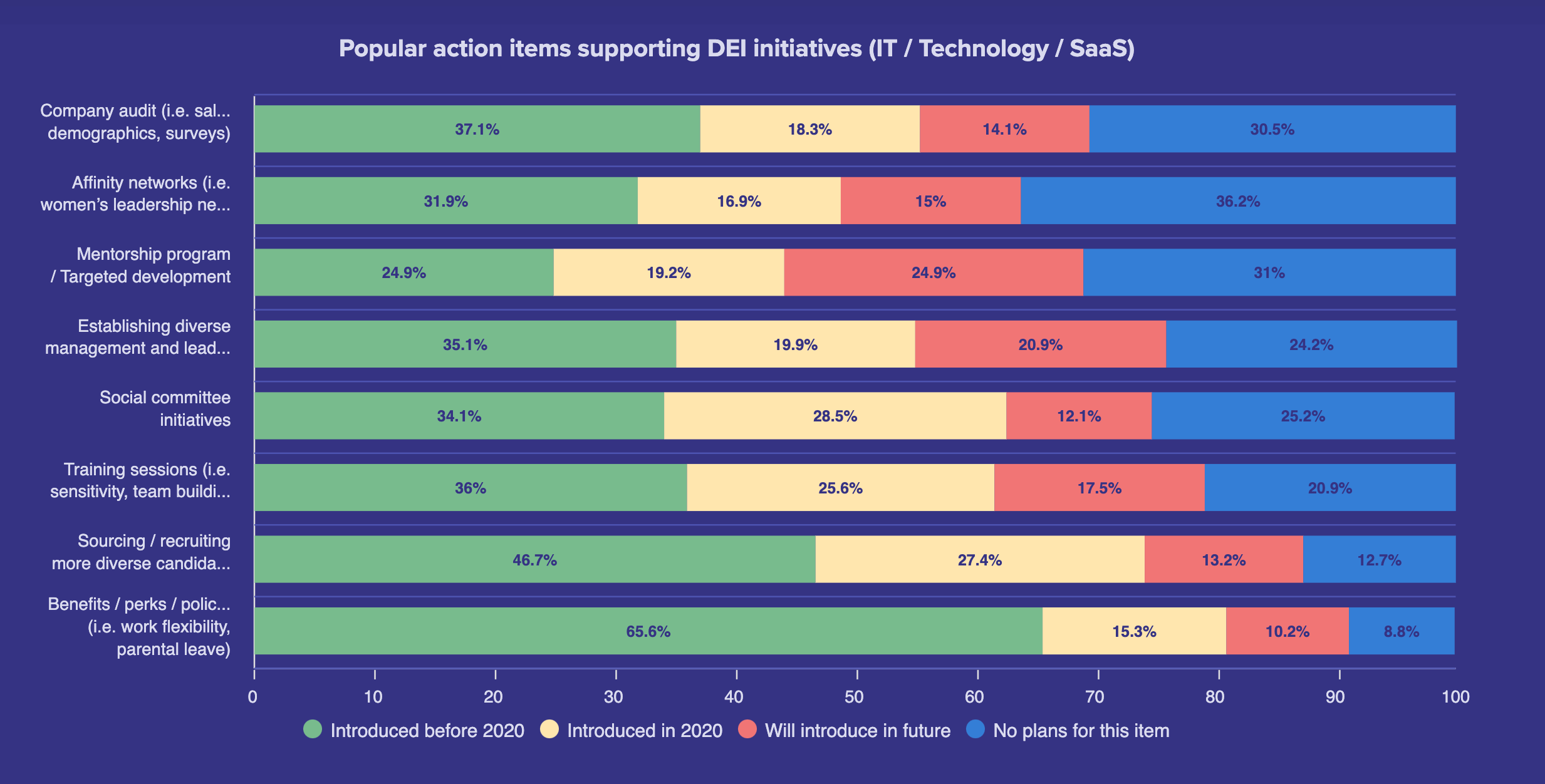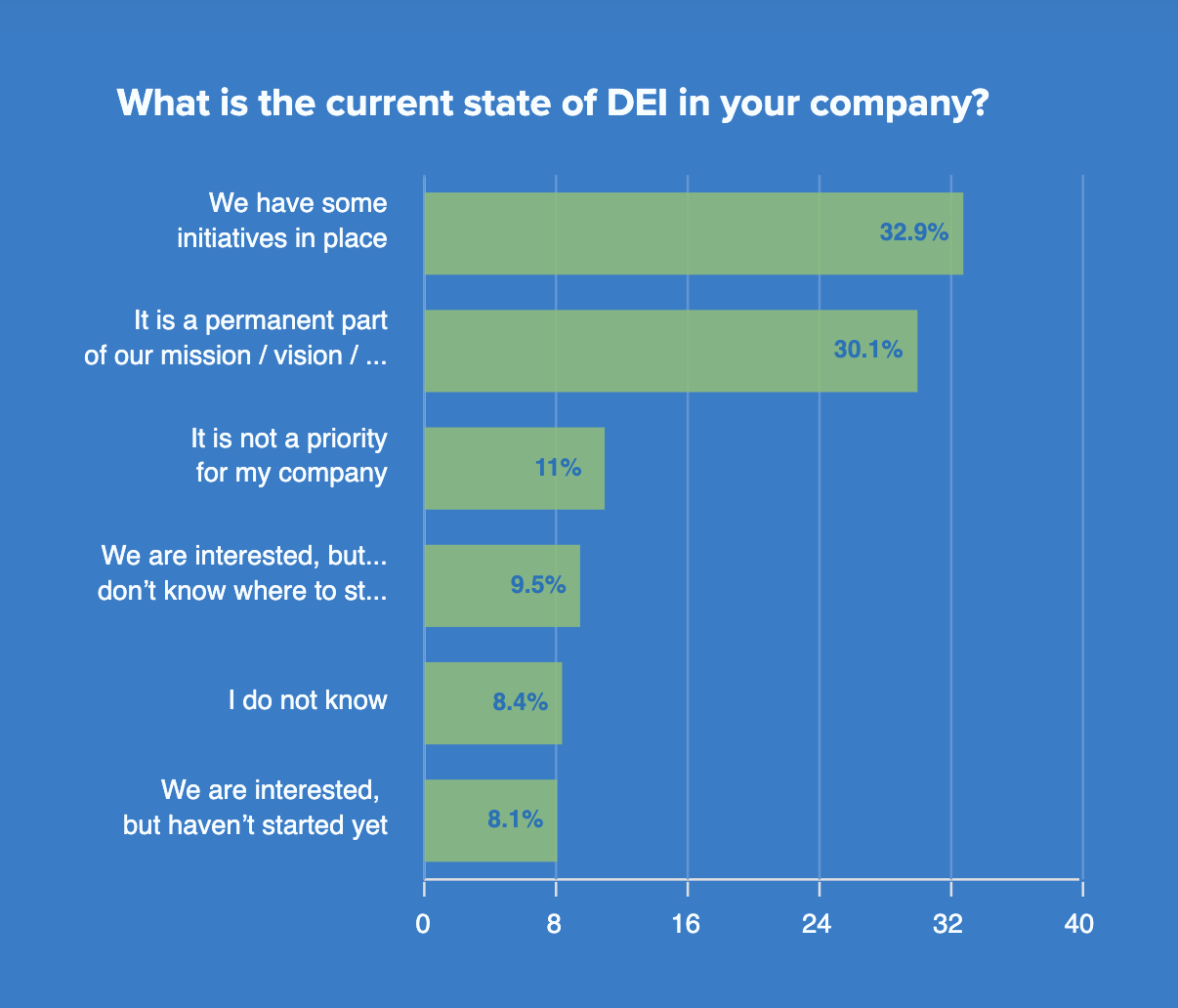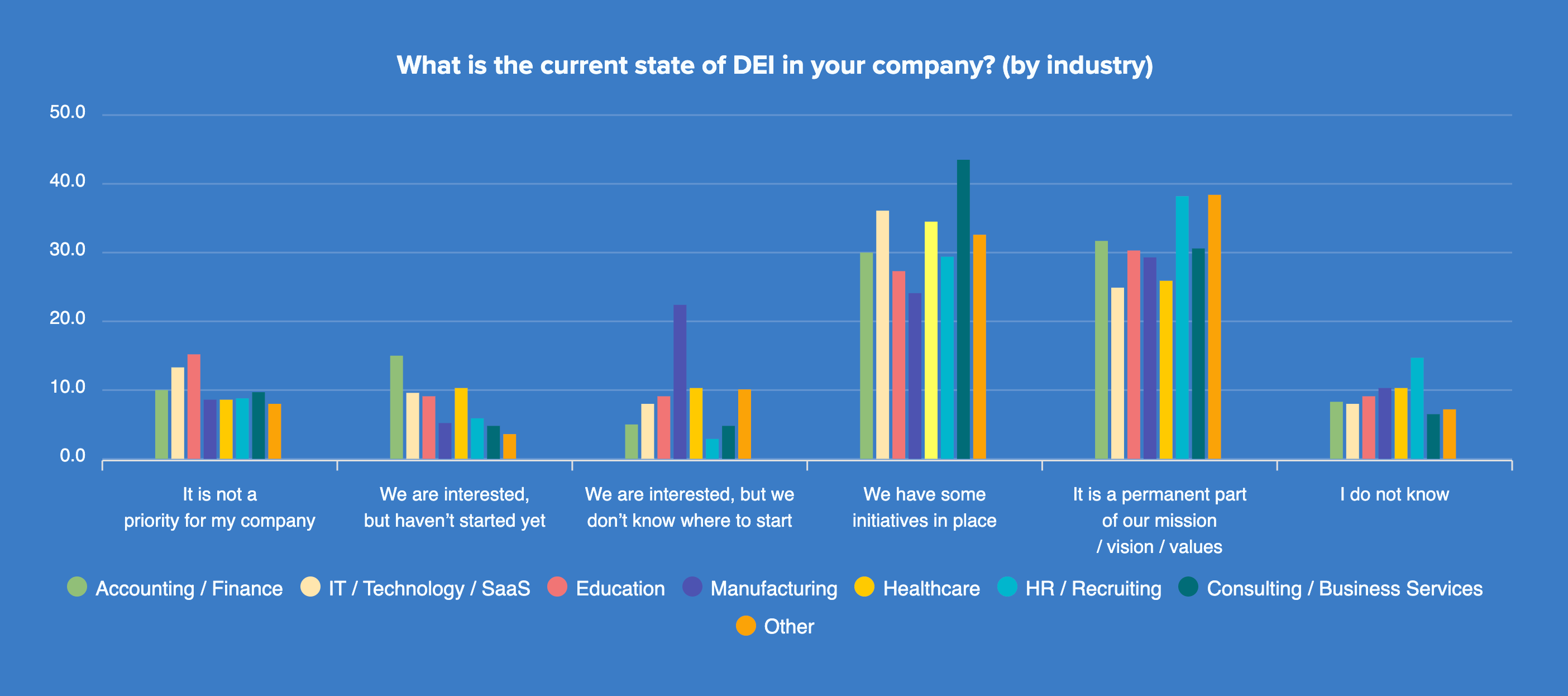What are your top DEI initiatives for the workplace?
Top DEI initiatives for the workplace include fostering diversity throughout the company, ensuring equity in opportunity, contribution, and advancement, and promoting inclusive teams and leadership. Measurable data points like company-wide demographics and employee feedback are crucial for tracking progress.

This is the sixth in a series of excerpts from our survey report titled All roads lead to diversity, equity & inclusion in the workplace. But which one do you take?, which was published in January 2021. Nearly 800 business and HR professionals filled out the 30-question survey, resulting in numerous compelling insights both for business and recruitment interests.
Stating intent and amplifying the importance of DEI initiatives in the workplace is significant in itself, but a common refrain is that it’s not enough. Talking the talk is easy enough, but people want to see action and results.
That means in order for an organization to see progress in a DEI strategy, there needs to be clearly defined and attainable goals, and tangible action items to reach those goals. That’s the nature of running a business. So, in our survey, we wanted to learn what DEI initiatives, goals and action items you can tangibly pursue to succeed in your DEI strategy at work.
In this chapter, we address the following questions:
- What are the top areas of priority in a DEI strategy?
- What are the most popular measurable data points in DEI?
- What are the top action items in DEI?
- Which industries struggle with the “know-how” in DEI initiatives?
Contents
Areas of priority
When it comes to areas of priority in a company’s DEI strategy – which can help a company define measurable targets – two thirds of respondents (64.8%) highlighted diversity throughout the entire company as an area of priority in its DEI initiatives, followed by equity in opportunity, contribution and advancement at 45.3%. One quarter (25%) of respondents listed diversity at the executive / management level as a priority.
In terms of inclusion, inclusive teams is the third-most popular area of priority at 26.4%, while inclusive leadership (16.8%) and inclusive benefits / perks / policies (12.4%) are further down the list of areas of priority in DEI strategy. Just 6.4% cite having an inclusive product or service as a priority DEI initiative.
“[It’s about] creating a company culture that provides an equitable work experience for everyone including employees in minority groups.”
Measurable data points
When respondents were asked about measurable data points used to track progress in DEI initiatives at work, demographics throughout an entire company (53.4%) far outranked demographics at the executive / management level (23.6%) as leading metrics.
Adding to the earlier point that the prioritization of DEI is democratically driven, 34.7% of respondents cited employee feedback as a leading data point to measure progress towards DEI goals.
Action items
To ensure progress, it’s essential to have clearly defined areas of priority and measurable data points when executing on DEi initiatives in the workplace. So we asked about the actual action items in our survey respondents’ DEI strategy, and when they started to apply them.
First, 61.6% of respondents say having DEI-friendly benefits / perks / policies – i.e. flexible working hours – was already established prior to 2020, and 51.5% of respondents say sourcing and recruiting more diverse candidates was an existing practice in their company before 2020.
“Moving forward, we will adopt more company-wide data that, when separated by minority groups, show declining or ideally no statistical difference amongst groups to measure our progress.”
The most popular action items introduced during 2020 are training sessions (25.7%) and sourcing and recruiting more diverse candidates (25.5%). Mentorship programs and targeted development are most likely to be planned in the future (21%). Affinity networks (33%), company audits (29%), and mentorship programs / targeted development (28.8%) are top choices by respondents as having no plans in place for those items.
By industry, we found that those in Accounting / Finance had the most action items in place prior to 2020 on average (53.5% compared with 43.4% overall), with those in Manufacturing most likely to not have plans for each action item on average (29.7% compared with 21.5% overall).
But there’s a lack of real ‘know how’
Despite all of this, what really stands out is an overall need to learn more about how to build a strategy with tangible DEI initiatives at work and putting those in action.
As stated above, nearly a fifth of respondents say that they are interested but either don’t know where to start or hadn’t started yet (17.6% combined). Combine that with the two out of five respondents (39.1%) who cite “creating a sustainable strategy that lasts over time” as a major challenge in their DEI strategy (leading all other challenges, including talent and buy-in), and it is clear that lack of “know how” is a significant hurdle in pursuing DEI initiatives.
When we broke down the state of DEI by industry, we found that those in Manufacturing are significantly more likely to be interested in DEI but don’t know where to start (22.4% versus 9.1% of all answers).
In short, our respondents say that they’re ready and willing, especially in making diversity, equity and inclusion a permanent, sustainable business strategy – but they also indicate that a playbook or road map would be helpful in building a playbook loaded with actionable, results-driven DEI initiatives.
We hope you find our survey results on DEI at work to be helpful to you both professionally and personally. Any thoughts or questions, please feel free to share them with us via Twitter, LinkedIn, or direct email (with “DEI report” in the subject heading). We want to hear from you!
Check out the other excerpts from our survey report on Diversity, Equity and Inclusion:
1. DEI at work: It’s time to take a deep dive
2. What does DEI mean for you and your business?
3. Is there meaningful progress in DEI? Depends on who you ask
4. DEI leadership – and who’s actually doing the work?
5. Your DEI strategic plan: The road is fraught with hurdles
7. Your DEI recruitment strategy: What are your action items?
8. Time for a DEI action plan: We’ll help you get there
Frequently asked questions
- What are DEI initiatives examples?
- DEI initiatives can include mentoring and tutoring programs, staff care, support for student organizations, academic challenges, peer mentorship, and financial counseling. These initiatives aim to foster diversity, equity, and inclusion in the workplace.
- What is the goal of DEI initiatives?
- The goal of DEI initiatives is to create safe and fair work environments and build trusting relationships with employees. When implemented effectively, these initiatives empower employees, fostering innovation and productivity.
- What are effective diversity initiatives?
- Effective diversity initiatives include non-discrimination policies and practices that emphasize merit as the basis for pay or promotions. These initiatives help create an environment where all employees feel welcome and valued.
- What are the top areas of priority in a DEI strategy?
- The top areas of priority in a DEI strategy include fostering diversity throughout the entire company, ensuring equity in opportunity, contribution, and advancement, and promoting inclusive teams and leadership.
- What are the most popular measurable data points in DEI?
- The most popular measurable data points in DEI include demographics throughout the entire company and employee feedback. These metrics help track progress and effectiveness of DEI initiatives.


